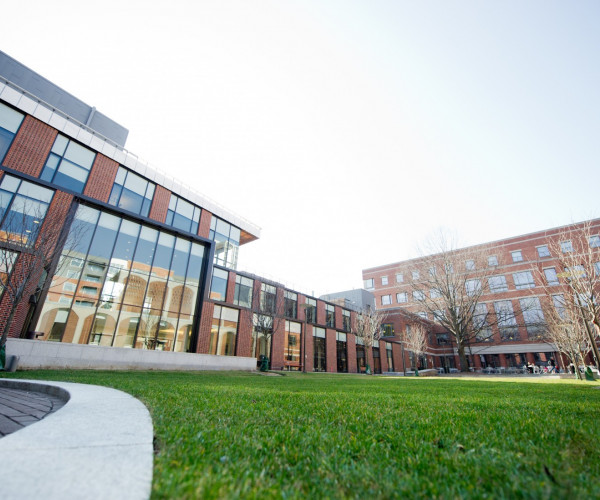Penn Law panelists unpack the legal framework behind Trump’s family separation policy
On October 3, Penn Law hosted four immigration law experts for a conversation about the origins of the Trump administration’s “Family Separation” policy. The panel presentation explored how the policy emerged over time and how it connects to longstanding inequalities in the family immigration system.
The event, “How Could this Happen? Unpacking the Legal Framework that Enables Family Separation,” was part of programming for Public Interest Week, hosted by the Toll Public Interest Center (TPIC). The panelists were Liz Yaegar, Supervising Attorney for HIAS Pennsylvania; Jaclyn Dean, Public Policy Associate at the National Asian Pacific Women’s Forum (NAPWF); Kara Finck, Practice Professor of Law at Penn Law; and Abel Rodriguez, Director of the Center on Immigration and an Assistant Professor of Religion, Law, and Social Justice at Cabrini University.
Rodriguez contextualized the current family immigration system by pointing to previous examples of systematic family separation. For example, he noted that three million immigrants were deported during the Obama administration, which also used detention centers and a family visa system that separated family members by category. Some family members were able to move to the United States faster than others, separating thousands of families each year. Rodriguez argued that deportation, detention and family separation are not unique to the Trump administration; rather, they trace back to a historically flawed immigration system.
Other panelists agreed.
“Separating immigrant families and families of color has always happened. It isn’t new, and it isn’t surprising,” said Finck.
Discussing President Trump’s migrant separation policy specifically, Yaegar pointed out, “the magnitude and the public’s response was a surprise. But this has been happening in various iterations for a very long time.”
Since 1929, people have been criminalized for either entering or re-entering the United States. Immigration law enforcement has ramped up with every recent presidential administration, escalating into the current policies towards migrants, said Rodriguez.
“While I was outraged, I wasn’t surprised,” he explained. “I’ve been outraged for a very long time.”
The panelists discussed how extreme poverty, abuse and neglect in home countries can drive child immigrants to arrive unaccompanied at the U.S. border. They noted the many obstacles to securing U.S. citizenship, including country caps, long wait times and financial expense. If one family member legally immigrates to the U.S., it can take decades before he is reunited with his family. In the intervening period, the social and political conditions in immigrants’ home countries can worsen, panelists argued, making immigration both timely and urgent.
Dean explained that migrants from high-volume immigration countries like China, Mexico, India and the Philippines experience the longest U.S. visa wait times. For example, the average wait time coming from the Philippines is fourteen years. One in three immigrants to the U.S. comes from an Asian country.
“This year, specifically, we have seen the largest population of Cambodian and Vietnamese refugees being deported back to their home countries,” Dean said. “This is a family separation crisis in it of itself.”
As part of her work for NAPWF, Dean spotlights immigration reform and immigration-related issues. She is passionate about the impact of federal policies on the lives of immigrant women, since immigrant women are more likely than U.S.-born women to experience poverty, unemployment and health problems. Further, if one of her family members is deported, an immigrant woman may suffer a loss of income and mounting legal fees.
“It causes a major disruption as they relive the trauma of coming to the U.S.,” said Dean.
The U.S. spends more on federal immigration enforcement than on all the other federal criminal law enforcement agencies combined. Last year, President Trump requested $18 billion to build a wall between the United States and Mexico. The administration sought $33 billion in total border security spending for improved access roads, additional Border Patrol agents, and better technology.
Rodriguez argued that the high amount of spending ultimately did not make a positive impact.
“I think we need major overhaul,” he said. “We’re spending billions of dollars on these policies that are harmful to the country, harmful to the people who are directly involved and harmful to their families.”
Unpacking the Legal Framework behind Trump’s family separation policy





